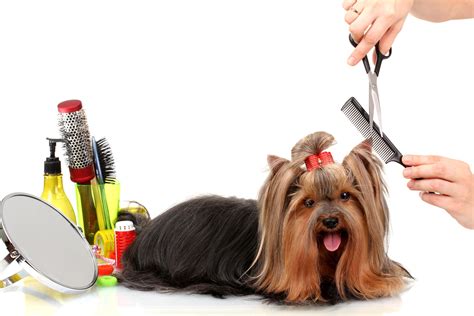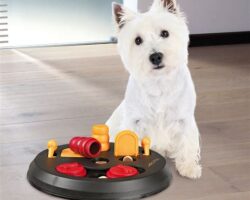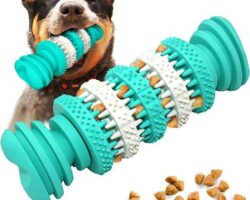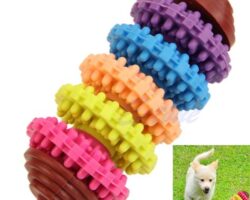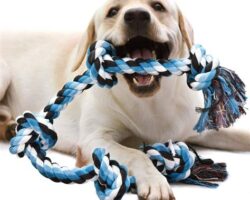Proper grooming is essential for keeping your furry friend healthy and happy. From choosing the right brushes and combs to understanding the importance of nail care and teeth cleaning, there are various aspects to consider when it comes to maintaining your pet’s overall well-being. In this blog post, we will explore the essential tools and products needed for a clean and well-groomed pet, including shampoos, conditioners, grooming accessories, and even a high-quality grooming table. Whether you’re a new pet owner or an experienced one, this comprehensive guide will help you navigate the world of pet grooming and ensure your pet looks and feels their best.
Choosing the Right Brushes and Combs
When it comes to grooming your pet, choosing the right brushes and combs is essential for maintaining a healthy and beautiful coat. With so many options available in the market, it can be overwhelming to know which ones are best suited for your furry friend. But fret not, this guide will help you understand the different types of brushes and combs and how to select the perfect ones for your pet.
1. The Slicker Brush: The slicker brush is a must-have tool for pets with long or medium-length hair. It has fine, short wires close to each other, which help in removing tangles and mats from the coat. This brush is gentle on the skin and effectively removes loose fur, leaving the coat smooth and glossy.
2. The Bristle Brush: For pets with short hair, a bristle brush is ideal. It has soft bristles that effectively remove dirt and debris from the coat. Additionally, it stimulates the skin, promoting natural oil production for a healthier coat. Choose a bristle brush with natural bristles for optimal results.
3. The Undercoat Rake: Breeds with a double coat, like Huskies or Golden Retrievers, require special attention to their undercoat. An undercoat rake is designed to remove loose and dead hair from the undercoat without damaging the topcoat. The long, round teeth penetrate the dense fur, ensuring a thorough grooming session.
| Type of Brush/Comb | Suitable for |
|---|---|
| Slicker Brush | Pets with long or medium-length hair |
| Bristle Brush | Pets with short hair |
| Undercoat Rake | Breeds with a double coat |
Remember, regular brushing and combing not only keep your pet’s coat looking good but also promote good blood circulation and prevent skin issues. However, each pet is unique, so make sure to consider their specific needs and coat type when selecting brushes and combs. With the right tools in hand, grooming sessions will become enjoyable bonding experiences for you and your beloved pet.
Essential Shampoos and Conditioners for a Clean Coat
When it comes to grooming your furry friend, one of the most important aspects to focus on is maintaining a clean and shiny coat. A clean coat not only keeps your pet looking good, but it also contributes to their overall health and well-being. Regularly bathing and conditioning your pet helps to remove dirt, debris, and excess oils from their fur, while also keeping their skin moisturized and free from irritation. To achieve this, it is crucial to choose the right shampoos and conditioners that are specifically formulated for your pet’s coat type and needs.
When selecting shampoos and conditioners, it is important to consider factors such as your pet’s breed, coat length, and any specific skin conditions they may have. Here are some essential products to consider:
- Moisturizing Shampoo: A moisturizing shampoo is ideal for pets with dry or sensitive skin. Look for a product that contains natural ingredients like oatmeal or aloe vera, as these can soothe and hydrate the skin, leaving your pet’s coat soft and shiny.
- Deodorizing Shampoo: If your pet tends to have an odor, a deodorizing shampoo can be a great solution. These shampoos are designed to eliminate odors and leave your pet smelling fresh and clean. Look for formulas that are gentle and pH-balanced to avoid any skin irritations.
- Medicated Shampoo: If your pet has a specific skin condition such as allergies or dermatitis, a medicated shampoo may be necessary. These shampoos are formulated with ingredients like coal tar or salicylic acid to help relieve itching, inflammation, and other symptoms associated with skin disorders. It is important to consult with your veterinarian before using a medicated shampoo to ensure it is safe and suitable for your pet.
In addition to shampoos, using conditioners after each bath can greatly benefit your pet’s coat. Conditioners help to detangle the fur, reduce static electricity, and make brushing easier. Here are some essential conditioners to consider:
- Detangling Conditioner: If your pet’s fur tends to get matted or tangled easily, a detangling conditioner can be a lifesaver. Look for a product that is specifically designed to smooth out knots and make combing or brushing a breeze. These conditioners often contain ingredients like silicone or argan oil to help soften the fur and prevent future tangles.
- Leave-In Conditioner: Leave-in conditioners can be a great option for pets with dry or damaged fur. These products are applied after bathing and don’t require rinsing. They provide extra moisture and nourishment to the coat, making it more manageable and resistant to breakage.
- Hypoallergenic Conditioner: If your pet has sensitive skin or allergies, a hypoallergenic conditioner is a safe choice. These conditioners are free from harsh chemicals and fragrances that may irritate the skin. They help to restore moisture and maintain a healthy coat without causing any adverse reactions.
Remember, every pet is unique, so it may take some trial and error to find the perfect shampoo and conditioner combination that works best for your furry friend. Pay attention to how your pet’s coat looks and feels after grooming, and make adjustments as needed. By choosing the right shampoos and conditioners, you can ensure that your pet’s coat stays clean, healthy, and beautiful.
Understanding the Importance of Nail Care
Proper nail care is essential for the overall health and well-being of your pet. Neglecting your pet’s nails can lead to a variety of issues, including discomfort, pain, and even infection. The nails of dogs and cats continuously grow, and if not trimmed regularly, they can become too long and cause problems. It’s important to understand the importance of nail care and to have the right tools and knowledge to keep your pet’s nails in good condition.
One of the main reasons why nail care is crucial is that long nails can be uncomfortable for your pet. Just like humans, pets can feel pain if their nails are too long. When pets walk or run, long nails can put pressure on the toe joints, leading to discomfort and an unnatural gait. Over time, this can even cause joint problems and affect their overall mobility. Regular nail trimming can prevent these issues and ensure that your pet is comfortable and able to move freely.
In addition to causing discomfort, lengthy nails can also pose a risk of injury. If a pet’s nails are too long, they can easily get caught on objects or become entangled in carpet fibers or clothing. This can result in torn nails, causing pain and potential bleeding. In some cases, a torn nail may require veterinary attention to prevent infection. By regularly trimming your pet’s nails, you can minimize the risk of accidental injury and keep them safe.
Nail care is also important when it comes to maintaining proper hygiene. Dirt and debris can get trapped under long nails, leading to a buildup of bacteria. This can cause infection and unpleasant odors. Regularly trimming your pet’s nails and keeping them clean can prevent bacteria from accumulating and maintain good hygiene. It’s also a good opportunity to inspect your pet’s paws for any signs of injury or abnormality.
- Regular nail trimming is necessary for your pet’s comfort and mobility.
- Long nails can pose a risk of injury and accidents.
- Proper nail care helps maintain hygiene and prevent bacterial buildup.
| Benefits of nail care | Importance |
|---|---|
| Prevents discomfort and pain | Ensures your pet’s comfort |
| Reduces the risk of injury | Keeps your pet safe |
| Prevents bacterial accumulation | Maintains good hygiene |
In conclusion, understanding the importance of nail care is crucial for pet owners. Regular nail trimming not only ensures your pet’s comfort and mobility but also reduces the risk of injuries and maintains proper hygiene. Remember to use the right tools and techniques when trimming your pet’s nails, and if you’re unsure, don’t hesitate to consult your veterinarian for guidance. By prioritizing nail care, you can help keep your pet healthy and happy.
The Essential Tools for Perfect Paw Maintenance
When it comes to pet grooming, it’s not just about keeping their fur clean and neat. Taking care of your pet’s paws is equally important for their overall health and wellbeing. Regular paw maintenance not only prevents painful conditions but also ensures your pet’s comfort while walking and running. In this blog post, we will discuss the essential tools you need for perfect paw maintenance.
1. Paw Trimmer: A paw trimmer is a specialized tool designed to trim the excess hair around your pet’s paws. It helps in preventing matting and tangling, which can lead to discomfort and skin infections. Choose a trimmer with sharp blades and a comfortable grip to make the trimming process easier and safer.
2. Nail Clippers: Keeping your pet’s nails at an appropriate length is crucial for their paw health. Long nails can cause pain while walking and even lead to joint problems. Invest in high-quality nail clippers with a safety guard to prevent accidental cuts. Regularly trim the tips of the nails, avoiding the quick (a sensitive area with blood vessels).
3. Paw Moisturizer: Just like our skin, a pet’s paw pads can become dry and cracked. To prevent discomfort and potential infections, use a paw moisturizer specifically formulated for pets. Look for natural ingredients like shea butter or coconut oil that provide nourishment and hydration to the paw pads.
- Pro Tip: If your pet frequently walks on rough surfaces, consider applying a paw balm to provide extra protection.
- Pro Tip: During winters, try using a paw wax to shield your pet’s paws from cold and harsh conditions.
| Tool | Purpose |
|---|---|
| Paw Trimmer | To trim excess hair around paws and prevent matting |
| Nail Clippers | To keep nails at an appropriate length |
| Paw Moisturizer | To prevent dryness and cracking of paw pads |
Remember, regular paw maintenance not only keeps your pet’s paws healthy but also provides an opportunity to check for any signs of injury or infection. Make sure to consult with a professional groomer or veterinarian for guidance on using these tools effectively and safely for your pet. By giving your pet’s paws the care they deserve, you are ensuring they lead a happy and active life!
Keeping Your Pet’s Teeth Clean and Healthy
When it comes to maintaining your pet’s overall health, dental care plays a crucial role. Just like humans, pets can develop dental issues such as plaque, tartar, and gum disease. Therefore, it is essential to pay attention to their oral hygiene. Here are some essential tips and tools to keep your furry friend’s teeth clean and healthy.
1. Regular Brushing:
Just like humans, pets also need their teeth brushed regularly. Using a pet-specific toothbrush and toothpaste, gently brush their teeth in a circular motion. Gradually introduce brushing to your pet by starting with short sessions and rewarding them with treats. Aim to brush your pet’s teeth at least 2-3 times a week.
2. Dental Chews and Toys:
In addition to regular brushing, providing your pet with dental chews and toys can help promote oral health. These specially designed items help reduce plaque and tartar buildup by providing a chewing action that cleans their teeth. Look for dental chews and toys that are safe, non-toxic, and appropriate for your pet’s size and breed.
3. Professional Dental Cleanings:
Despite regular at-home care, professional dental cleanings are necessary to ensure your pet’s teeth and gums are in optimal condition. Veterinary clinics offer professional cleanings which involve a thorough examination, scaling, polishing, and sometimes dental X-rays. Regular dental cleanings can help prevent more severe dental issues and ensure your pet’s overall well-being.
Conclusion:
Proper dental care is essential for maintaining your pet’s overall health and well-being. Regular brushing, providing dental chews and toys, and scheduling professional dental cleanings are all important steps to take in keeping your pet’s teeth clean and healthy. By incorporating these practices into their routine, you can ensure that your furry friend has a happy and healthy smile.
Grooming Accessories for Eye and Ear Care
When it comes to grooming your beloved pet, it’s essential to pay special attention to their eyes and ears. Regular eye and ear care not only helps to maintain their overall health and well-being but also prevents potential infections and discomfort. To ensure that you have all the necessary grooming accessories for your pet’s eye and ear care routine, here is a list of must-have tools:
- Clean and Gentle Wipes: These wipes are specifically designed to clean the delicate areas around your pet’s eyes and ears. They are gentle on the skin and help remove any dirt, debris, or tear stains that may have accumulated.
- Ear Cleansing Solution: An ear cleansing solution is essential for keeping your pet’s ears clean and free from wax buildup. Look for a solution that is specifically formulated for pets and consult with your veterinarian for the best product for your furry friend.
- Gauze or Cotton Balls: These soft and absorbent materials are perfect for applying cleaning solutions to your pet’s eyes and ears. Always use a fresh piece of gauze or cotton ball for each application to prevent the spread of bacteria or infections.
In addition to these tools, it’s important to remember a few key tips for proper eye and ear care. First and foremost, always approach your pet’s eyes and ears with a gentle touch and calm demeanor to ensure they feel safe and comfortable throughout the grooming process. Avoid using any sharp or pointed objects near their eyes or ears as it can cause injury or discomfort.
| Tips for Eye Care: | Tips for Ear Care: |
|---|---|
| 1. Regularly inspect your pet’s eyes for any redness, discharge, or signs of irritation. If you notice any abnormalities, consult with your veterinarian for further guidance. | 1. Check your pet’s ears for any redness, swelling, or foul odor. These can be signs of an ear infection that should be treated by a professional. |
| 2. Use the clean and gentle wipes to carefully wipe away any dirt or tear stains around your pet’s eyes. Be cautious not to touch their actual eyeball. | 2. Gently lift your pet’s ear flap and pour a small amount of the ear cleansing solution into their ear canal. Massage the base of the ear to distribute the solution, and then let your pet shake their head to remove any excess liquid. |
| 3. Keep your pet’s eyes protected from excessive sunlight or foreign objects by trimming the fur around their eyes. Be careful not to cut too close to their eyes to avoid any injuries. | 3. Avoid using cotton swabs or inserting anything deep into your pet’s ear canal as it can damage their eardrum. If your pet has excessive earwax buildup, consult with your veterinarian for appropriate cleaning methods. |
By following these tips and having the necessary grooming accessories, you can ensure that your pet’s eyes and ears stay clean and healthy. Remember, proper eye and ear care is essential for their overall well-being, so make it a regular part of your grooming routine. Your furry friend will thank you for the extra care and attention!
Dealing with Shedding: Must-Have Tools for Fur Management
Dealing with shedding can be a challenge for pet owners, but with the right tools, managing your pet’s fur can become much easier. Shedding is a natural process for dogs and cats, and it is important to have the proper tools to help maintain their coat and keep your home clean. In this blog post, we will discuss the must-have tools for fur management that every pet owner should consider.
1. Deshedding Tools: One of the most effective tools for managing shedding is a deshedding brush or comb. These brushes are specially designed to remove loose hair from your pet’s coat, reducing shedding and preventing hair mats. The deshedding brush should have a wide head and long teeth to reach deep into your pet’s undercoat.
2. Grooming Gloves: Grooming gloves are another great tool for fur management. These gloves have rubber tips on the palm that help to remove loose hair while providing a gentle massage to your pet’s skin. Grooming gloves are especially beneficial for pets who are sensitive to traditional brushes or combs.
3. Lint Rollers: Lint rollers are essential for controlling pet hair on furniture, clothing, and carpets. These sticky rollers can quickly and easily remove fur from surfaces, making it easier to keep your home clean and fur-free. Keep a lint roller handy in multiple rooms of your home for convenience.
4. Vacuum Cleaners: A good quality vacuum cleaner is a must-have for pet owners dealing with shedding. Look for a vacuum specifically designed for pet hair, as these models often come with special attachments and powerful suction to remove hair from carpets, upholstery, and hard floors.
5. Shedding Rakes: Shedding rakes are ideal for removing loose hair from thick and long-haired breeds. These tools have multiple blades designed to penetrate through the topcoat and remove loose hair from the undercoat. Shedding rakes are particularly useful during seasonal shedding when pets tend to shed more heavily.
- Regular grooming sessions with the right tools can significantly reduce shedding and keep your pet’s coat healthy and shiny.
- It is important to choose the appropriate tools based on your pet’s breed, coat type, and shedding pattern.
- Remember to be gentle while brushing or combing your pet’s fur to avoid causing any discomfort or pain.
- In addition to using the right tools, maintaining a balanced diet and providing proper nutrition can also help in managing shedding.
- Consult your veterinarian for recommendations on grooming tools and techniques that are best suited for your pet.
| Tool | Description |
|---|---|
| Deshedding Brush | A wide-headed brush with long teeth designed to remove loose hair from the undercoat. |
| Grooming Gloves | Rubber-tipped gloves that remove loose hair while massaging your pet’s skin. |
| Lint Rollers | Sticky rollers used to remove pet hair from surfaces like furniture and clothing. |
| Vacuum Cleaners | High-quality vacuum cleaners with attachments for removing pet hair from various surfaces. |
| Shedding Rakes | Tools with multiple blades to remove loose hair from thick and long-haired breeds. |
By investing in the right tools and regularly grooming your pet, you can effectively manage shedding and keep both your pet and home clean. Remember to choose tools that are suitable for your pet’s coat type and breed, and always prioritize their comfort and well-being during grooming sessions. Happy grooming!
The Benefits of Investing in a High-Quality Grooming Table
Grooming your pet is an essential part of their overall health and well-being. Regular grooming not only helps to keep your pet looking their best, but it also helps to prevent certain health issues and keeps them comfortable. One of the key tools for effective grooming is a high-quality grooming table. Investing in a good grooming table can provide numerous benefits for both you and your pet.
1. Stability and Safety: A high-quality grooming table offers stability and safety, ensuring that your pet remains secure and comfortable during the grooming process. These tables are designed with sturdy construction and non-slip surfaces, reducing the risk of accidents or injuries. With a stable grooming table, you can groom your pet with confidence, knowing that they are secure and safe.
2. Convenience and Ease of Use: A grooming table provides a designated space for grooming, making the process more convenient and efficient. These tables are typically equipped with features like adjustable height and grooming arms, allowing you to customize the table according to the size and needs of your pet. This makes it easier for you to access different parts of your pet’s body and ensures that grooming tasks can be performed with ease.
3. Comfort for Your Pet: A high-quality grooming table is designed with your pet’s comfort in mind. They are equipped with cushioned surfaces or rubber mats, providing a comfortable and non-slippery surface for your pet to stand or lie on during grooming. The elevated platform also allows for better access to your pet, reducing the need to bend or strain your body, which can be particularly beneficial for older pets or pets with mobility issues.
4. Organization and Efficiency: Investing in a grooming table with built-in storage compartments or hooks can help you stay organized and efficient during the grooming process. These storage options allow you to keep essential grooming tools, such as brushes, combs, and clippers, within easy reach. This helps to streamline the grooming process and saves you time searching for tools, allowing you to focus more on providing the best grooming experience for your pet.
5. Professional-Grade Results: Whether you are a professional groomer or a pet owner who wants to achieve professional-grade results, a high-quality grooming table can make a significant difference. The stability, convenience, and comfort offered by these tables allow you to groom your pet more effectively and efficiently. This ensures that you can achieve precise and professional-looking grooming results, leaving your pet looking their best.
In conclusion, investing in a high-quality grooming table brings numerous benefits for both you and your pet. From stability and safety to comfort and professional-grade results, these tables enhance the grooming experience and contribute to your pet’s overall well-being. So, if you are serious about maintaining your pet’s grooming routine, consider investing in a top-notch grooming table that suits your needs and preferences.
Frequently Asked Questions
1. How can I choose the right brushes and combs for my pet?
When choosing brushes and combs for your pet, consider factors such as their coat type and length, as well as their specific grooming needs. Bristle brushes are ideal for short-haired pets, while slicker brushes work well for removing mats and tangles in all coat types. For pets with long or curly hair, consider using a comb with wide teeth. It’s important to choose grooming tools that are suitable for your pet’s specific needs to ensure effective grooming without causing discomfort.
2. What are some essential shampoos and conditioners for a clean coat?
There are various shampoos and conditioners available for pets, each designed for specific purposes. Look for a gentle and pH-balanced shampoo that is suitable for your pet’s skin type. If your pet has sensitive skin or allergies, opt for hypoallergenic or medicated shampoos. Additionally, consider using a conditioner to keep the coat soft and moisturized, especially for pets with long hair. It’s always recommended to consult with a veterinarian or professional groomer to determine the best products for your pet’s coat and skin condition.
3. How important is nail care for pets?
Nail care is extremely important for pets as overgrown nails can lead to discomfort and various health issues. Proper nail trimming prevents the nails from becoming too long, avoiding painful ingrown nails or potential injuries. Regular trimming also helps maintain your pet’s posture and prevents joint and back problems. It’s essential to use specialized pet nail clippers or grinders and be cautious not to cut into the quick, which may cause bleeding and pain. If you’re unsure about nail trimming, consider seeking assistance from a professional groomer or veterinarian.
4. What are the essential tools for perfect paw maintenance?
To ensure perfect paw maintenance, there are several essential tools you should have. These include nail clippers or grinders for regular nail trims, a paw balm or moisturizer to keep the paws moisturized and protected, and grooming wipes to clean the paws after walks or outdoor activities. Additionally, having a good-quality paw brush or comb can help remove dirt, debris, and tangles from your pet’s paw pads and between their toes. Regular paw maintenance helps prevent infections, keeps the paws healthy, and provides comfort to your pet.
5. How can I keep my pet’s teeth clean and healthy?
Maintaining your pet’s dental health is crucial for their overall well-being. Regular teeth brushing using pet-safe toothpaste and a toothbrush or finger brush is highly recommended. Dental chews and toys designed to promote dental hygiene can also be beneficial. Additionally, consider scheduling professional dental cleanings with a veterinarian to remove tartar and plaque buildup. It’s important to establish a dental care routine early on to prevent dental diseases such as periodontal disease, tooth loss, and discomfort for your pet.
6. What grooming accessories are necessary for eye and ear care?
For eye care, having a non-irritating, veterinarian-recommended eye cleansing solution and cotton pads or swabs is essential to gently remove dirt, debris, or tear stains around your pet’s eyes. It’s crucial to be careful not to touch the eye itself or use products that are not specifically formulated for pets. For ear care, consider having ear cleansing solutions, cotton balls, and ear wipes to keep your pet’s ears clean and prevent ear infections. It’s important to consult with a veterinarian if you notice any signs of discomfort or abnormal discharge in your pet’s eyes or ears.
7. What are the must-have tools for managing shedding?
Shedding is a common issue for many pets, and having the right tools can help manage it effectively. A deshedding tool, such as a slicker brush or a grooming glove, can help remove loose and excess fur from your pet’s coat. Furminators or shedding blades are also popular options for reducing shedding. Additionally, using specially formulated shampoos and conditioners designed to minimize shedding can be beneficial. Regular brushing and grooming sessions, along with a balanced diet and proper hydration, can help keep your pet’s coat healthy and minimize excessive shedding.

